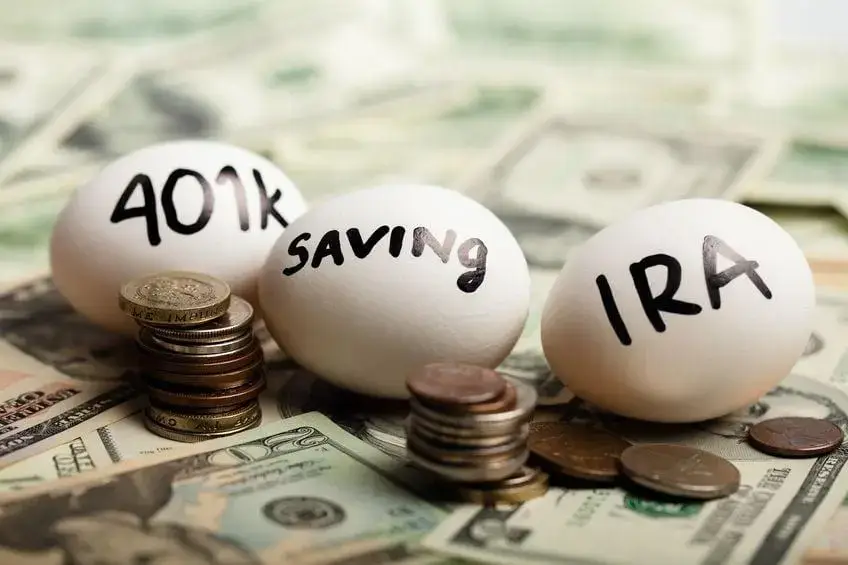How to keep inflation and volatility from devouring your hard-earned wealth faster than you can earn it - without using 401ks or riding the stock market roller coaster.
Really, How Much Is Enough?
One of the primary reasons that dentists keep their nose to the grindstone long after they are ready to be “free” from their practice, is that they don’t know how much is enough. “Do I have enough money, investments, or assets to last me the rest of my life after I stop working?”
How much is enough?
Younger dentists (40 years old and younger) will often throw out figures like $10M, $12M, $15M or more. They believe that they are in the running to achieve that kind of gain. It’s not impossible, but unless you are “in the business of” dentistry (corporate, DSO’s, group practice roll-ups, etc.), that will be a steep climb. And even then, that model will not sustain itself indefinitely. Those closer to retirement age (55-65 years old) usually give me a range of $6M – $10M. Doable? Yes. But only with tremendous effort and sacrifice.
These figures beg the question, “How did you come up with your number?” Silence… some
stuttering and then something like, “I think that’s about normal,” or “that’s what my financial advisor told me,” or for the younger crowd, “I’m going to crush it!!”
There’s nothing wrong with setting high goals. But for most practitioners – they are simply picking a big round number to hedge against uncertainty. That’s the problem with goals that are not well-defined, without definition there can be no clear path to meet that goal. At some point, when reality hits, despair and frustration set in.
Without a clear plan, the “safe” option is to stay with the status quo. After all, it is providing the income you need to provide a certain lifestyle for yourself and your family. But the “safe” option comes at a price. A price on your health: physical, mental, and emotional. The price of relationships and quality family time (when was the last time you took a vacation longer than a week?). The price of failing to enjoy travel, new challenges, and adventures while you are still young enough to enjoy them. We never know how much longer we have left.
Even if you love what you do (the actual “doing of the thing”), you still need a Plan B – a way to opt-out of the chair whenever you’ve had enough.
The 401(k) Trap - Why so many dentists get stuck on a hamster wheel
Most traditional financial planning is built around a 401(k) or other similar tax deferral strategy.
I’ve never been a fan of tax-deferral vehicles (Traditional IRA’s, 401(k)’s, Defined Contribution Plans, Cash Balance Plans). Many people incorrectly believe that they are tax “savings” plans, however, the tax is only deferred to a later date.
The disadvantages of most tax deferral plans:
- Higher Future Taxation
The strong likelihood of higher future taxes when distributions are taken should be cause to reconsider tax deferral. Do you believe taxes will go down or go up in the future? Do you really want to kick the can down the road if taxes will be higher in the future? Can tax-deferred compounding make up for higher taxation?
- “The Lockbox”
Your money is locked up until age 59.5. You can’t access it if you find a better opportunity for use or investment of the retirement account money without paying a penalty. (Wall Street wants to keep your money as long as possible.)
- Ignorance by Abdication
By abdicating your financial future to Wall Street, a financial advisor or money manager teaches you NOTHING about how to invest or create cash flow from your assets. No one talks about this one, but in my experience, it’s a huge negative.
- Higher tax brackets
You convert long term capital gain profits (lower taxation) into ordinary
income (higher taxation) on distribution.
- Stepped-up basis disallowance
The loss of the stepped-up basis for assets passed on to your heirs (which stifles generational wealth transfer strategies).
- Other tax benefits lost
Depreciation, cost segregation, long-term capital exchange opportunities
are null and void inside retirement plans.
These tax-deferral retirement plans are the status quo for the majority of practitioners. It’s what’s sold to us by the financial advisory industry (the sales arm of Wall Street). Most practitioners dutifully check the boxes, and only later in life and career begin to realize that this plan is not creating the real results they desire (Freedom, choices and options without waiting until age 60-65 to begin to live life on your own terms). It doesn’t have to be this way.
In my Freedom Founders group, our members either terminate their tax-deferral plans (and roll them over into traditional IRAs, which can then be self-directed), or modify their current plan so that their owner’s capital can self-directed into investments outside of Wall Street. Staff funds remain under fiduciary management – as it should be.
The Failure of the Traditional Financial Model – No Cash Flow
The problem with the traditional financial model of “work hard (harder and longer), save and accumulate as much as possible,” is that there is no certainty of “how much is enough?” This simple question for which traditional financial advisors and money managers have no answer keeps already decades-long hard-working professionals at the hamster wheel of active income into their late 60’s and 70’s.
Accumulated wealth without a cash flow constant means irregularity, unpredictability, and
uncertainty – which doesn’t work when one is contemplating leaving the active income career. Most financial advisors move their clients from the stock market (volatility) to the predictability of bonds, Treasuries, CD’s and annuities – with just one additional problem – the returns are relatively predictable but abysmally low. Add in the potential of higher costs of living over the next several decades, and it’s easy to understand how difficult it is for the majority to be able to consider a life after work with any peace of mind.
How much is enough? Hint: You might be closer than you think.
At Freedom Founders, we begin with a Freedom Blueprint, a customized working document that first defines non-negotiables – core beliefs and values that we will never give up or trade for money or things. Then we determine our “financial freedom number” – the monthly cash flow before tax required to pay for our desired lifestyle. At that point we reverse engineer to the specific capital asset base needed to produce that income. Through our network, we are able to deploy the capital into assets that generate the annuity income without ever depleting the capital base.
If investments are able to create sustainable, predictable income that can be relied upon to replace your active (earned) income, many practitioners find that they are closer than they think.
Uncertainty is the real reason most stay stuck running on the hamster wheel far longer than necessary.
The ultimate denominator of wealth is TIME

It doesn’t matter how much you amass in your 401(k), if you can’t access it until 59.5 years of age, you will find yourself stuck behind the chair until that date. I speak with many practitioners who have been disciplined to save and invest enough to retire in their late 40s or early 50s, only to realize that their options to enjoy that freedom are limited because they can’t access any of that hard-earned money for years. They find themselves stuck behind the chair – having earned enough to buy their freedom but not able to use it.
If your money is not enabling you to buy back your time, then of what use is it, really? The ultimate denominator of wealth is time.
The real tragedy of the $12 Trillion that has been erased from the global markets in the volatility we have experienced over the last few months is the lost TIME that it represents. One of our newest members confided in me that he had lost $800k on Wall Street in the last 6 months before joining Freedom Founders. How many years will it take him to re-earn that wealth behind the dental chair?
Do you really want to bet the future years of your life on this game?
Not only time and money, but peace of mind. A month ago at our member event, the contrast was striking. While the sky was falling in the traditional markets, our members were calm, confident and grateful. No fear. No running for the exits. No watching the financial news feed every hour.
What was the difference??
There is no magic bullet. There are only fundamentals.
My good friend Alastair MacDonald spent years as a guide in the jungles of Africa. At age nineteen, he won a coveted contract to guide National Geographic in some of the most remote regions of the world.
In the jungle, what you don’t know can kill you. To journey without a guide would be stupid and deadly. But for a guide who knows how to identify threats, how to read the swish of an elephant’s tail and avoid trouble… the risks can be mitigated, and the journey becomes an adventure of opportunities.
The same holds true in the marketplace. One of the best things that I did when I was young, with more enthusiasm than smarts, was to connect with old timers who knew real estate like the back of their hand. These mentors took me under their wing. They helped me avoid a thousand threats I never knew existed and set me on the road to success.
Admittedly, in my younger years, I learned some lessons the hard way and have the scar tissue to prove it. But the older I get, the more valuable it becomes to me to avoid wasting time wandering paths alone when I can follow the trail
of an experienced guide.
Unlike financial advisors who have a vested interest in maintaining your ignorance (their job security – pay no mind to the man behind the curtain), a guide is someone who has gone before and who wants to show you the way. The best guides in my life have been those who have accomplished what I wanted to accomplish, and who desired to show me the way.
To be clear, I don’t expect my guides to have a “perfect” track record. Far from it. The best learning experiences are usually marked by scars.
What I look for in a Guide
Full Cycle Experience
I don’t want fair weather experts who put out shingles only when the weather is sunny and the markets are rising. I want someone who has had experience when the hammer drops.
Integrity When it Hurts
Things don’t always go according to plan. Nothing in life is guaranteed. What matters is how you respond to challenges. Integrity means standing fast. Communicate early, often, and clearly. Own up to mistakes and take care of those for whom you bear responsibility.
A Maverick Mentality
The courage to question “conventional wisdom”. There are many really smart people who are still slaves to society’s definition of success. I’m looking for people who are willing to take ownership of their life, not blindly accepting the value system they’ve been taught by peers, colleagues, or society at large.
Today, my network of contrarians (Freedom Founders) is my best insurance policy. That is the only “magic bullet” that has preserved tens of millions in wealth while Wall Street burns.
My advice?
● Do the hard work of creating specificity – a plan with defined measurables.
● Be willing to question conventional financial wisdom
● Focus on fundamentals
● Find a guide (or better yet, a community of advisors)
Remember this: Your network is your net worth.



